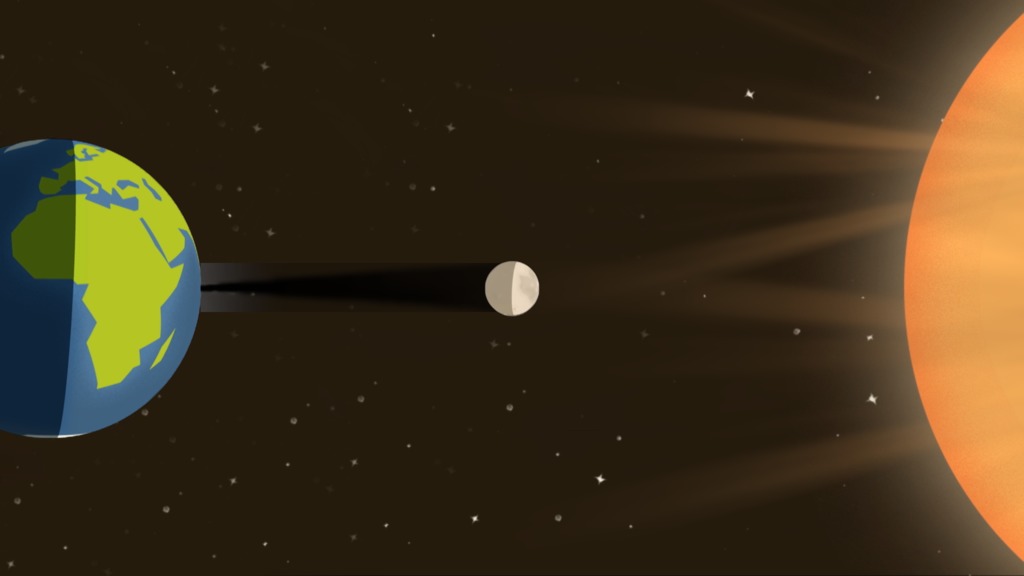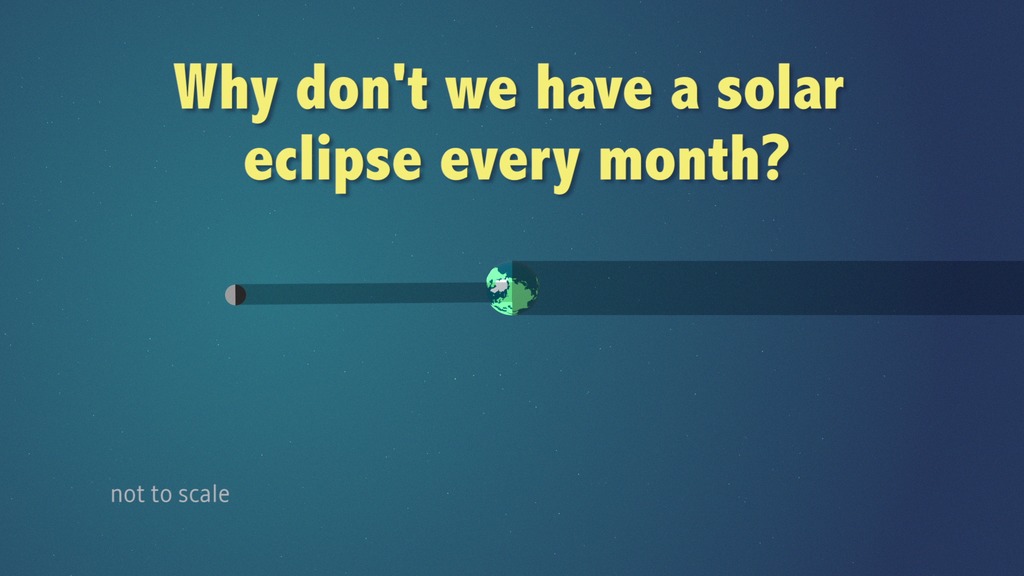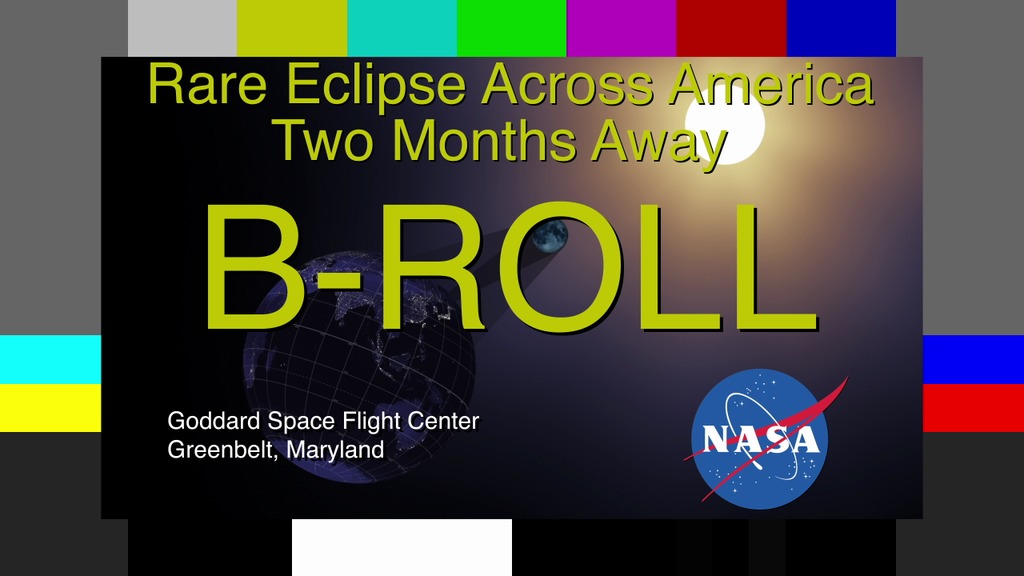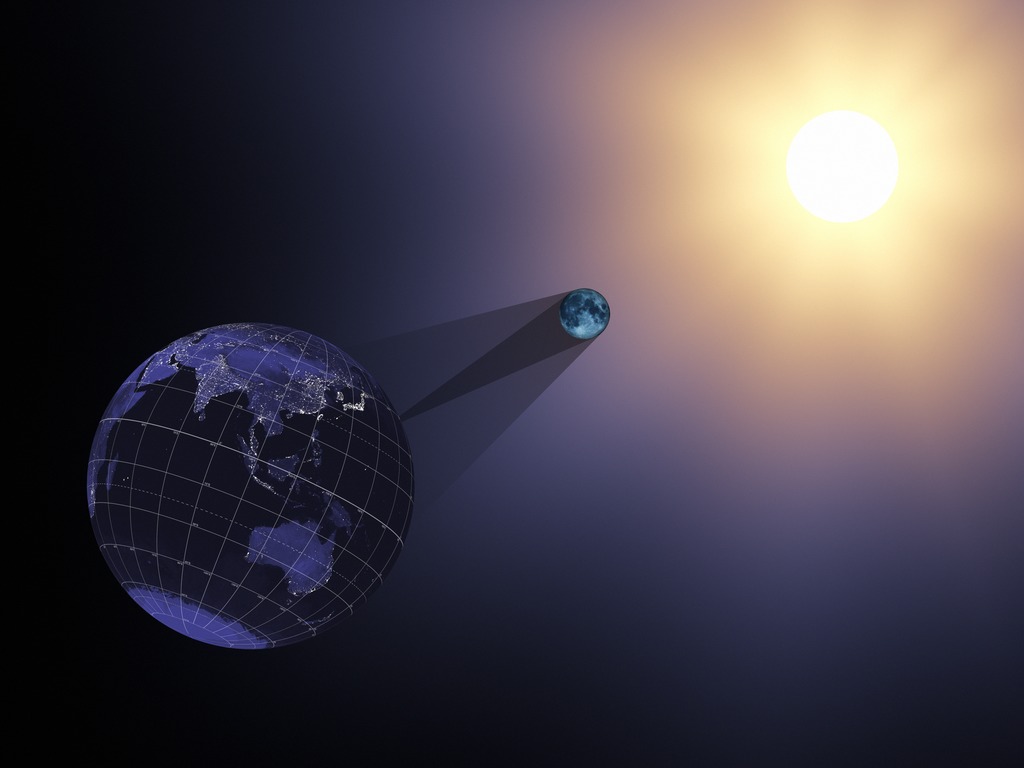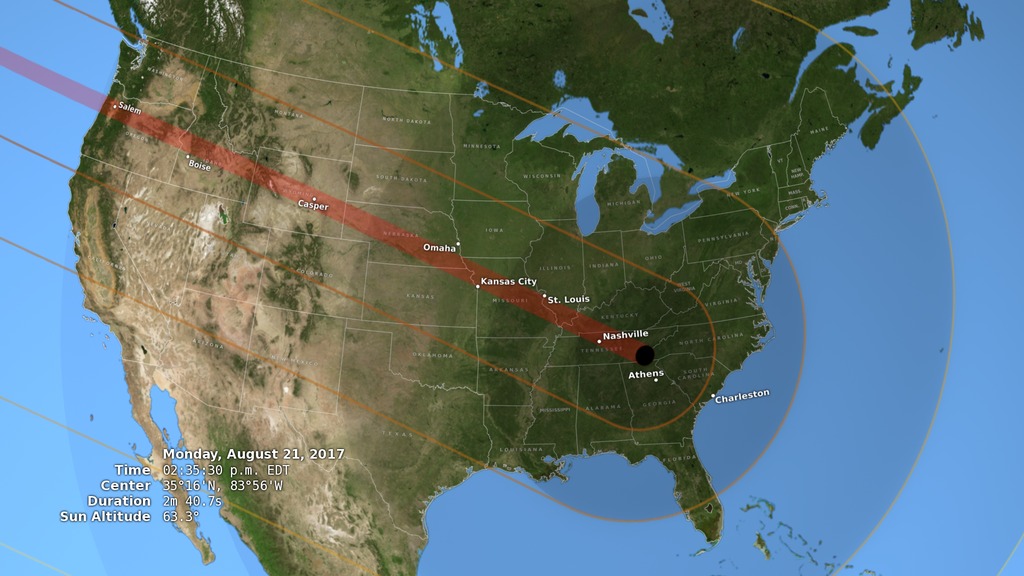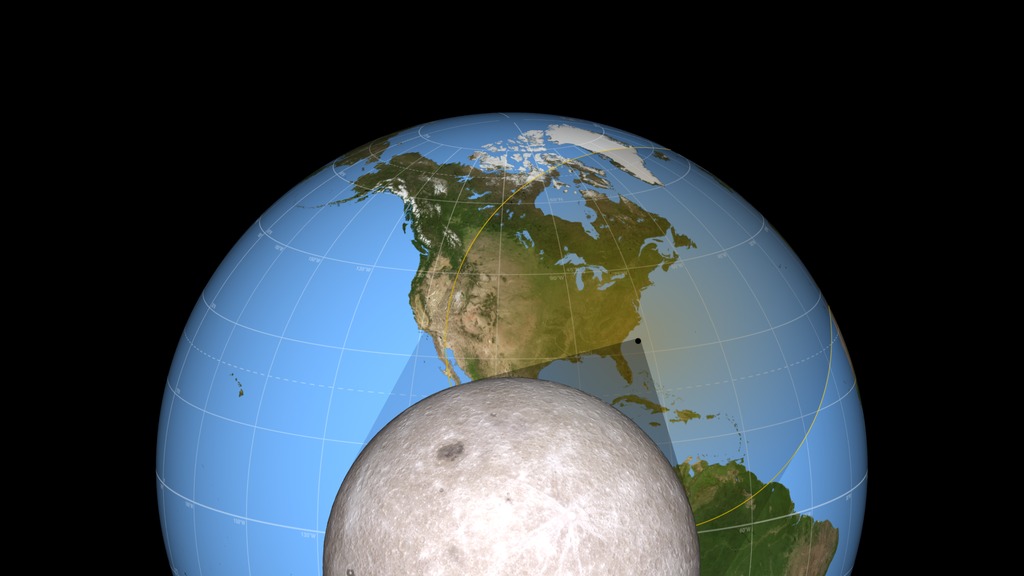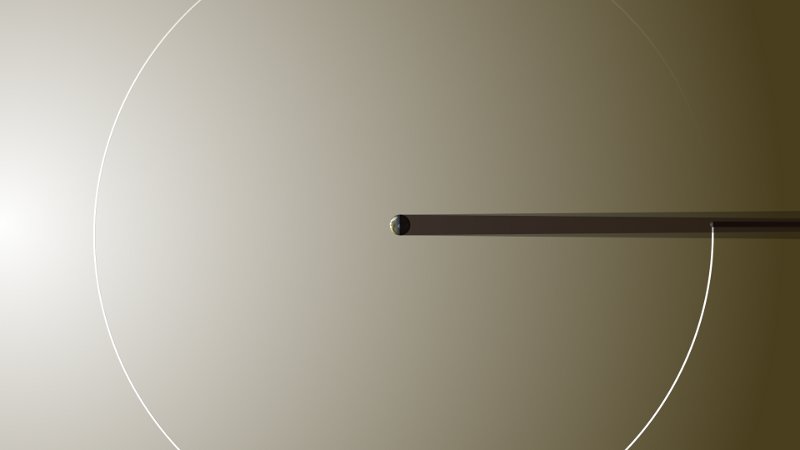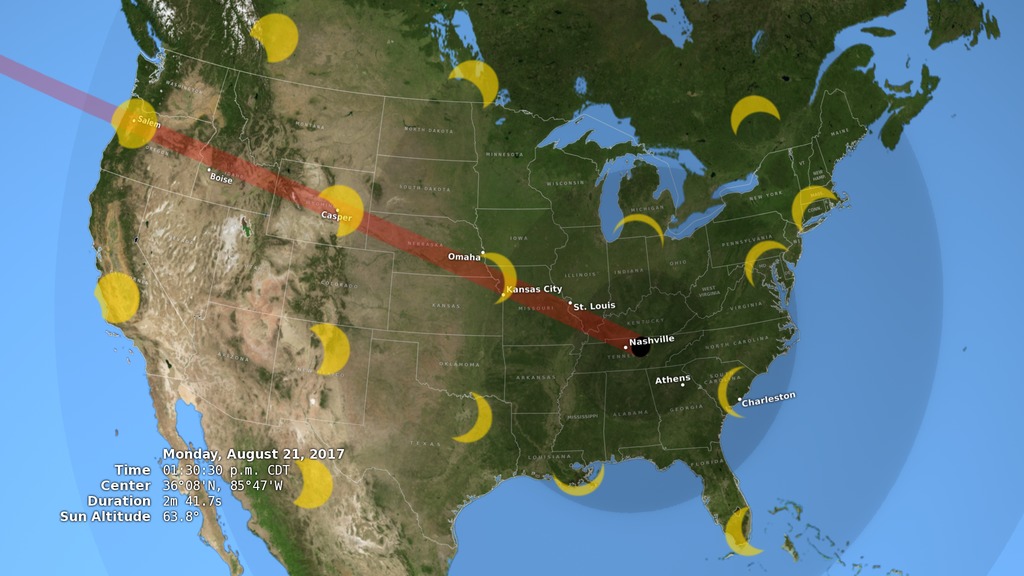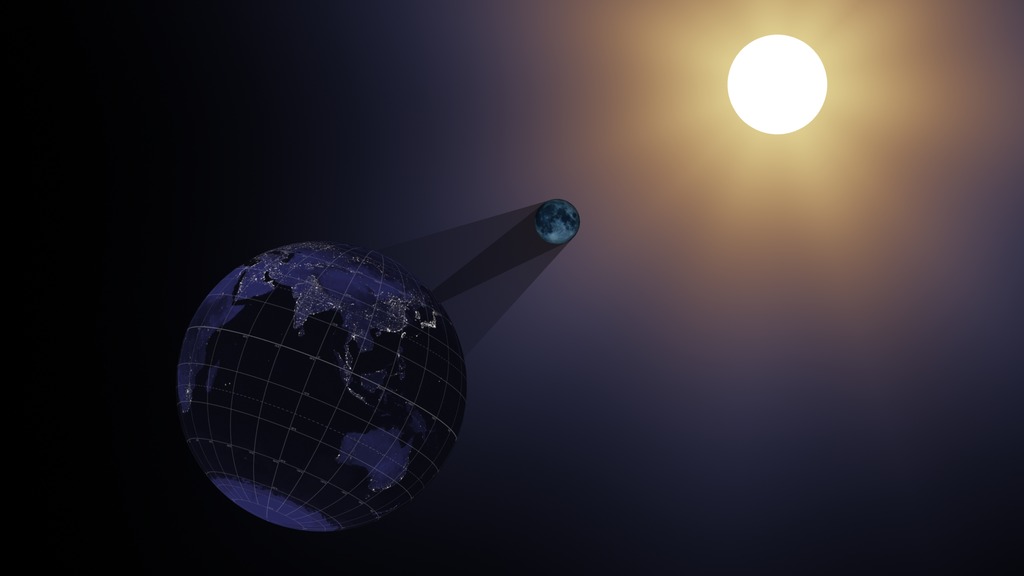2017 Eclipse and the Moon's Orbit
The Moon orbits the Earth in the months prior to the August 21, 2017 total solar eclipse. Viewed from above, the Moon's shadow appears to cross the Earth every month, but a side view reveals the five-degree tilt of the Moon's orbit. Its shadow only hits the Earth when the line of nodes, the fulcrum
of its orbital tilt, is pointed toward the Sun.
Solar eclipses can only occur at New Moon, when the Moon is between the Earth and the Sun. But not every New Moon produces an eclipse. The Moon's orbit is slightly tilted, and as seen in this animation, the tilt causes the Moon's shadow to miss the Earth during most New Moons—about five out of six, in fact.
As the Earth-Moon system orbits the Sun throughout the year, the Moon's orbital tilt changes direction relative to the Sun. Sometimes the up
side of the orbit is facing the Sun, and sometimes the down
side. Twice a year, for about a month, what's facing the Sun is the line dividing the up and down sides. This is the line of nodes, the intersection of the Earth-Moon plane and the ecliptic or Earth-Sun plane. A solar eclipse can only occur at a New Moon that falls within one of these month-long eclipse seasons. That's when the Moon is close enough to the ecliptic to actually come between the Earth and the Sun.
In this animation, the olive-colored square represents the ecliptic plane, while the light blue circle shows the plane of the Moon's orbit. The darker half of the lunar orbit plane is below (south of) the ecliptic, and the dividing line between light and dark is the line of nodes.
The radial grid on the lunar orbit plane is stationary relative to the stars. It appears to rotate because our point of view is fixed to the Earth-Sun line; we're following the Earth as it orbits the Sun. At first glance, the line of nodes appears to be tracking with the grid, but in reality it's slowly turning westward (clockwise), completing a full revolution in 18.6 years.
Unlike most illustrations of this kind, the Earth and the Moon are to scale. The Sun is off-screen to the left, about 400 times farther than the Earth-Moon distance and roughly twice as big as the Moon's orbit.
In this oblique view, the umbra component of the Moon's shadow barely reaches the Earth as it traces a path across North America.
The Moon orbits the Earth in the months prior to the August 21, 2017 total solar eclipse. This is identical to the first media item on this page, except that the Moon and Earth labels have been omitted.
Credits
Please give credit for this item to:
NASA's Scientific Visualization Studio
-
Visualizer
- Ernie Wright (USRA)
-
Producer
- Genna Duberstein (USRA)
Release date
This page was originally published on Wednesday, September 9, 2015.
This page was last updated on Tuesday, November 14, 2023 at 12:06 AM EST.
Series
This visualization can be found in the following series:Datasets used in this visualization
-
DE421 (JPL DE421)
ID: 752Planetary ephemerides
This dataset can be found at: http://ssd.jpl.nasa.gov/?ephemerides#planets
See all pages that use this dataset
Note: While we identify the data sets used in these visualizations, we do not store any further details, nor the data sets themselves on our site.
